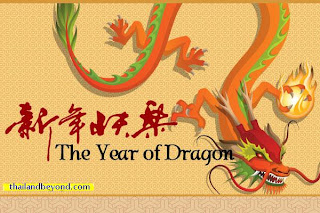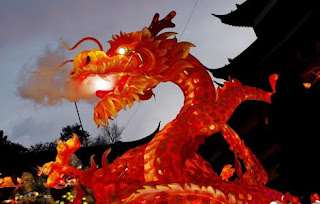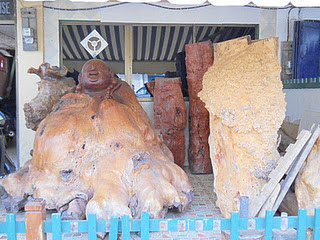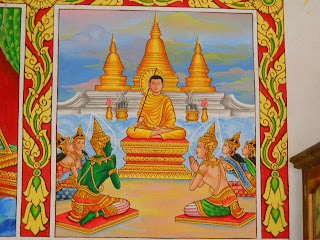
Laos has now graduated from a
Land-locked country into a
Land-linked country in this globalized world.
The many Friendship bridges will soon replace the river crossings and mountain pass access linked her neighbours.
Expected to be completed in year 2015 will be the Trans-Asian Railway Network initiated by the UN Social Economic Commission for Asia (ESCAP) that will cover 114,000 km and travel through 28 countries in the region.
Vientiane will be linked to Mohan port in Dai Autonomous Prefecture of Xishuangbanna,Yunnan Province.
China based road construction companies can be seen in most part of Laos.
Savang-Phonetong Road Construction is undertaken by Qin Huang Inland Group of China which began the road upgrading in 2009.
The number of vehicles(all categories) on the road is gradually increasing and has topped 1,008,,788 in year 2010.Laos has a population of 6,000,000.
Visitors to Laos will be surprised that most of the vehicles exceed the 2.0 litres category.You don't find small budget cars.
Savannakhet is the second most vehicles populated city.
Made-in-China motorcycles were making inroads.
Inexpensive Chinese products are flooding China’s southern neighbours like Cambodia, Laos, Myanmar and Vietnam.
The products are transforming the lives of some of the poorest people in Asia, whose worldly possessions a few years ago typically consisted of not much more than one or two sets of clothes, cooking utensils and a thatch-roofed house built by hand.
The Jinlong 110 cc bike is a very beautiful and cheap toy.
While loitering around the Ban Savang area which is at the end of Rue Chao Anou road junction,noticed this Saisavang Guest House.
Rates 40,000 kips (fan).
A bit far out of town centre.Nearby many chinese hardware shops.
Smiling children of Laos but elder sister was too shy for the camera.
Her T-shirt carries the message,
Love Laos and you're Happy.
Off Savang-Phontong road is the Wat Savang.
There was a school here that looked like a hut with no concrete structures.
The word
Savang was named after Price SiSavang Vatthana(full name Samdach Brhat Chao Mavattaha Sri Vitha Lan Xang Hom Khao Phra Rajanachakra Lao Parama Sidha Khattiya Suriya Varman Brhat Maha Sri Savangsa Vadhana).
Born on 13 November 1907 at the Royal Palace of Luang Prabang, the son of King Sisavang Vong and Queen Kham-Oun I.
Graduated with a degree from Paris's École Libre des Sciences Politiques (now called Sciences Po). In 1951, he served as Prime Minister, and when his father became ill on August 20, 1959, he was named Regent.
On 2 December 1975 the King was forced to abdicate the throne after Pathet Lao came to power and later he was appointed supreme advisor to the President.
He refused to leave the country. In March 1977, he was arrested with the Queen and was put into an internment camp at Sam-Neua in northern Laos.
It was called "Camp Number One", where all the important political prisoners were held.
About 1978, it was reported that he, along with Queen Khamphoui have died in a re-education camp near Sop Hao.
Laos has a constituitional monarchy system till 1975.

Young monk at Vat Savang.
Bell and drum tower.
In Chinese Buddhist temples, the Sangha starts the day at the break of dawn by sounding the bell, followed by the drum, 108 times each.
This process is repeated at dusk in the reverse order. It is also used for announcing special times throughout the day.
It is said that when one hears the clear resonating chime of the bell and beat of the drum, one's troubles are dispelled in the moment, helping Wisdom to grow and develop.
It also has a profound effect of inducing the thought of repentance for beings suffering in the lower realms.

A very unique bell different from the normal conventional type used in most of the temples.
Temple bells are a very significant part of the temple depending on how you approach the situation.
There is an ancient Chinese proverb that states that if there is a temple, there is a bell and where there is a bell, there is a temple.
It gives a sacred feeling of the sound that cries out the need and desire for peace and balance among all living things on earth.
The bells ringing have since long ago symbolized the purification that is taking place within the sacred place that houses the temple bells as well as the desire for balanced lives.
The Buddhist temple bells were created in his memory to continue on his amazing teachings with the spirit and the drive that he had and these bells are believed to bring balance and harmony.
Ancient Chinese store owners would often hang temple bells at the front door entrance to the store or restaurant to inspire and encourage the positive flow of energy both in and out of the store.
But in the case of this bell here,the physics is the longer the mass the sound echo reflected won't be that high pitch.

This is a temple with cremation facility as noted by the long chimney behind.
That's why we have a bell that produced low tonal sound.
There were seven
nagas protecting Buddha as he sat meditating under a tree.
According to the Vinaya or Buddhist Monastic Rule, an animal cannot become a monk.
At one time, a Naga was so desirous of entering the Order that he assumed human form in order to be ordained. "Shortly after, when asleep in his hut, the naga returned to the shape of a huge snake.
The monk who shared the hut was somewhat alarmed when he woke up to see a great snake sleeping next to him!
The Lord Buddha summoned the
naga and told him he may not remain as a monk, at which the utterly disconsolate snake began to weep. The snake was given the Five Precepts as the means to attaining a human existence in his next life when he can then be a monk.
Then out of compassion for the sad snake, the Lord Buddha said that from then on all candidates for the monkhood be called '
Naga' as a consolation. They are still called '
Naga' to this day."

Shrine with a blend of Hinduism and Buddhism.
The lower womb chambers have statues of some Hindu deities at four corners.
Hindus believe that their lives are merely stages in the progression to ultimate enlightenment and liberation.
As in this shrine architecture,the pyramid ended with a pillar to enlightenment.
From temporal world to the eternal. The gods have always been attracted to mountains and they have great mountains for the symbolism and appearance of the temple.
There was an impulse to create soaring towers that looked like mountain ranges.

An altar in the cremation chamber.
A guesthouse in downtown Vientiane that promotes teak wood handicraft.
Characteristics and Benefits of Teak
Teak (and other wood furniture) will not make you uncomfortable by holding either heat or cold.
Metal and even plastic patio furniture will be burning hot when left in the sun, while wood moderates heat and will still be comfortable to the touch.
Metal or plastic patio furniture will also absorb cold. The night may have been cold but the patio furniture will still be comfortable, if it is wood.
Wood improves your comfort level on any patio, or in any sunroom or garden.
1) Teak is durable in all weather. Teak has a natural oil content and a dense grain that resists rot. Many teak benches approach or exceed 100 years old.
2) True Teak (Tectona grandis) grows naturally in dry, hilly forests in Southeast Asia (India, Burma, Thailand, Laos, Cambodia, North & South Vietnam, East Indies) and is a deciduous tree. Tectona grandis does not grow in rain forests but it has been over-harvested and should only be purchased from sources that can verify that it is from a Teak farm and not from natural forests.
3) Heartwood or sapwood. Teak furniture should only be made from Tectona grandis heartwood. The heartwood turns a rich brown when exposed to air. It is usually straight & has a distinctly oily feel. The heartwood has excellent dimensional stability and a very high degree of natural durability.
4) Teak does not cause rust or corrosion when in contact with metal.
5) Teak can be left outside all year. Whether you finish your teak furniture with Spar Varnish (recommended) or leave it to weather naturally, your furniture does not require the use of indoor storage space in the winter. No lugging furniture in and out. Simply wash with soapy water in the spring and repair any areas where the Spar Varnish may be worn or damaged. Sand with a fine sandpaper, remove all sawdust, then apply Spar Varnish as noted under 'Finishing'.
Laughing Buddha(chinese:Budai/vietnamese:
Bố Đại) wishes all visitors to thailandbeyond.com
"A very Happy Chinese New Year 2012" and "chúc mừng năm mới" (Happy New Year ) being Vietnamese Tet Festival also falls on the same day on the 23rd day of January 2012.
Chinese throughout the world will be welcoming the new Lunar Year of the Dragon.
May the new year brings good health and prosperity to all.

Artistic design of furniture using teak wood.
Laughing Buddha with lots of wealth.
Laughter is good for your health Laughter relaxes the whole body.
A good, hearty laugh relieves physical tension and stress, leaving your muscles relaxed for up to 45 minutes after.
Laughter boosts the immune system. Laughter decreases stress hormones and increases immune cells and infection-fighting antibodies, thus improving your resistance to disease.
Laughter triggers the release of endorphins, the body’s natural feel-good chemicals. Endorphins promote an overall sense of well-being and can even temporarily relieve pain.
Laughter protects the heart. Laughter improves the function of blood vessels and increases blood flow, which can help protect you against a heart attack and other cardiovascular problems.
'Laughter the best medicine'
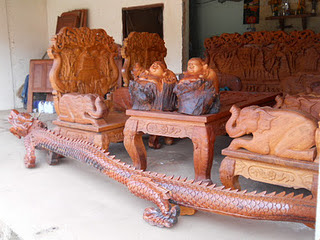 Artisan craftsmen of Laos skillfully crafted a long dragon using the teak wood.
Artisan craftsmen of Laos skillfully crafted a long dragon using the teak wood.